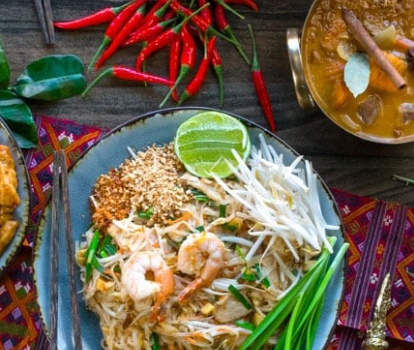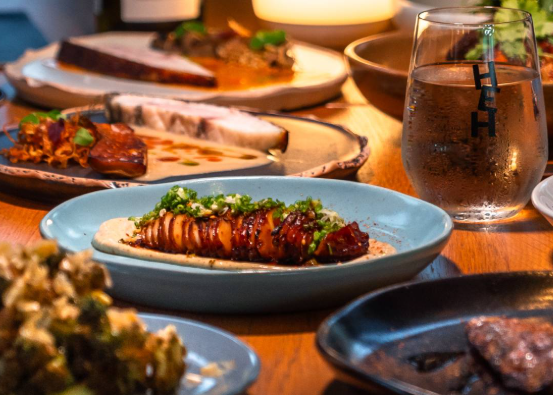
If there’s one thing that gets under my skin, it’s the overhyping of food. No dish is ever truly “to die for,” and few actually “melt in your mouth.” When people throw around such exaggerated descriptions, it feels like pure embellishment. Maybe it’s because I’m a bit like the humble Khao Tom (rice soup) in the world of Thai food—simple and to the point—but I also can’t help being a stickler for terminology. The more I delve into Thai street food, the more I notice inconsistencies in how dishes are described. So, to make sense of my confusion, I’m sharing my thoughts on Thai food terminology, starting with one of the trickiest areas: Thai curries. These terms have led to some heated debates between me and Fanfan, and at one point, I spent an entire sleepless night pondering the distinctions between curries and soups. While I don’t claim to have all the answers, I’m curious to see if others share my confusion.
Curries, Soups, or Both?
In Thailand, the word “Kaeng” is often used for curries, but it can also mean soup. The situation gets even murkier when we consider the various dishes with names that seem to blur the line between the two. For instance, “Kaeng Kiao Wan” is green curry, while “Kaeng Phed” is red curry. These are classic examples of curries, but then there’s “Kaeng Som,” which is a sour soup, or “Kaeng Tom Yum” (hot and sour soup) and “Kaeng Tom Kha” (coconut soup), both of which are referred to with the word “Kaeng” as well. So, what’s going on here? It seems the words “curry” and “soup” are used interchangeably in Thai cuisine, depending on the dish, which only adds to the confusion.
Understanding the Nature of Curries
Traditionally, curries have two defining characteristics: they often use a curry paste made from fresh ingredients, and they typically feature a coconut milk base. However, there are exceptions. Take “Kaeng Pa” (Jungle Curry), for example. It doesn’t use coconut milk or a curry paste. On the other hand, there are dishes like Khao Soi curry, which has a coconut base and curry paste, but it’s often described as a noodle soup. So can curries be soups and vice versa? Not all curries are soups, though; Khua Kling (Southern Dry Curry) has no broth at all, so it definitely isn’t a soup. Then we have dishes like Nam Prik Ong, a chili dip from the north, which is cooked similarly to a curry—should it be classified as one? For me, I’ve come to accept that if a dish is called a curry, I’ll treat it as such, and if it’s called a soup, I’ll do the same, even if the lines between the two can get pretty blurry.
Is Thai Food Really Spicy?
Let’s veer off-topic for a moment—Is Thai food really spicy? Technically speaking, a spice is a dried seed, fruit, root, or vegetable. But most of the ingredients that give Thai food its fiery kick, like fresh chili peppers, galangal, lemongrass, and kaffir lime leaves, aren’t technically spices because they’re fresh and not dried. Once these ingredients are dried or ground into powders, like chili powder or dried peppers, they become spices. But when they’re used fresh, they’re more pungent than spicy. I’ve stopped using the word “spicy” and instead call the heat in Thai dishes “fiery,” which feels like a more accurate term. After all, when a dish only contains one ingredient like pepper, calling it “peppery” makes more sense than calling it “spicy.”
Breaking Down Curry Pastes
When it comes to understanding what makes a curry a curry, we have to look closely at the pastes that go into them. Thai curries are typically made with pastes, and those pastes can contain a variety of spices. For example, the red curry paste is made from dry red chilies, which is a spice, so it’s definitely a curry. The green curry paste, however, is made from fresh green chilies, and while it may not seem like a curry at first glance, it actually contains cumin and white peppercorns—spices that make it a legitimate curry. But then we have Jungle Curry again, which has no curry paste and no coconut milk, and I can’t help but classify it more as a soup than a curry.
Conclusion: The Blurry Line Between Curries and Soups
The more I explore Thai cuisine, the more I realize that there’s no simple, straightforward answer when it comes to distinguishing between curries and soups. While some dishes are undeniably curries, like red and green curries, others blur the lines, making classification difficult. At the end of the day, I’ve learned to accept that terminology can be flexible, and while we might not have all the answers, understanding the traditions and the reasoning behind these names is part of the fun in exploring Thai food. Whether you call it a curry or a soup, what matters most is the experience of savoring these delicious dishes.








